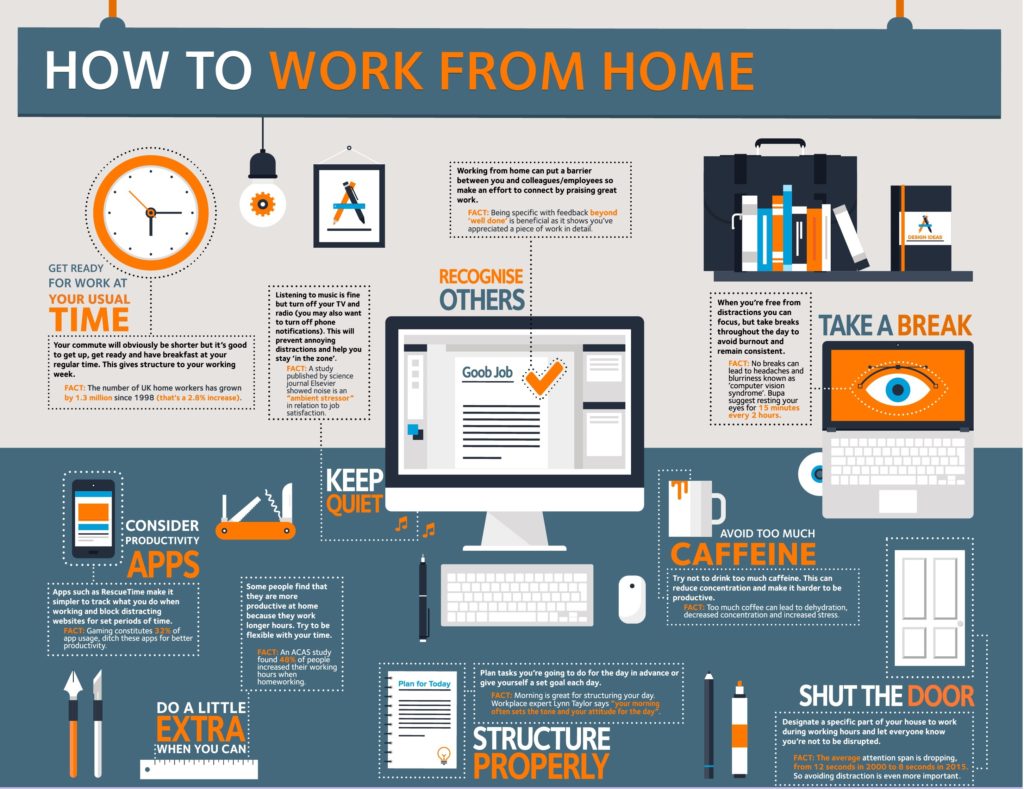The freedom of flexibility makes working remotely appealing, but sticking to a productive schedule while working from home can be tough. Whether your company offers telecommuting or you’re striking out on your own as a freelancer, working remotely can seem like a great perk, but it can also remove the structure that holds your days together. Maybe that flexible schedule keeps you from daily basics like exercising and eating, or maybe it just causes you to work 12 hour days without realizing where the time has gone. Whichever camp you fall into, it’s important to make sure your day doesn’t become a black hole. Remote work requires sustained effort and focus, just like any other job done well.
Are you a night owl or an early bird? The beauty of working from home is that you can work during your best hours. Your boss may require you to be available during certain times, but hopefully they give you enough flexibility to shift your schedule accordingly. With those best hours in mind, set a time to start and end your designated work hours. If you can avoid it, try not to start working right when you wake up. Give yourself time to eat breakfast, shower and get dressed, just like you would if you were going to an office. Keeping this morning ritual also ensures you don’t wake up, work through breakfast and ignore personal hygiene. A similar ritual at the end of the day — like turning off your computer, leaving your office and locking your office doors — helps you stay away from work in the evening, too.
Once you set the boundaries of your workday, it’s time to turn your focus to what you do during those hours. You don’t need to lock yourself in your home office for eight hours straight, in fact the best part about working from home is having flexibility, but build your breaks into your schedule so you aren’t tempted to slack off with social media or burnout by working right through lunch. It may seem excessive, but when I had trouble sticking to a schedule at home, I set a number of alarms to structure my day. Take a break to work out at 10:30, eat lunch at noon, stop working at 3, and so on. Once you’ve set those alarms, take those breaks seriously. As time goes on, this schedule may become second nature, and you can turn off those alarms. But when you’re just starting out, having those notifications can help you avoid sitting in your chair for 11 hours.
Once you have your schedule mapped out, do your best to stick to it. If you can force yourself into a routine, you’ll find it easier to keep the work-life balance that can so easily slip away when you work from home. With flexibility comes great responsibility and your initial schedule may not be perfect or you may not be sticking to it as well as you think. If you really want to optimize your day, track your time either manually or using an app to not just plan how you spend your time, but where you actually spend it. If your scheduled half-hour breaks are secretly two-hour procrastination windows, your time tracking app will let you know.
After a few weeks of tracking your time, you’ll begin to see trends, and you can adjust your priorities. Maybe Instagram is wasting away your day or you need to do a better job of listening to those alarms and actually taking out-of-the-office breaks. Once you reassess, you can tweak your schedule and create the ideal workday!

Additional Links:
Health Benefits of Workplace Freedom



